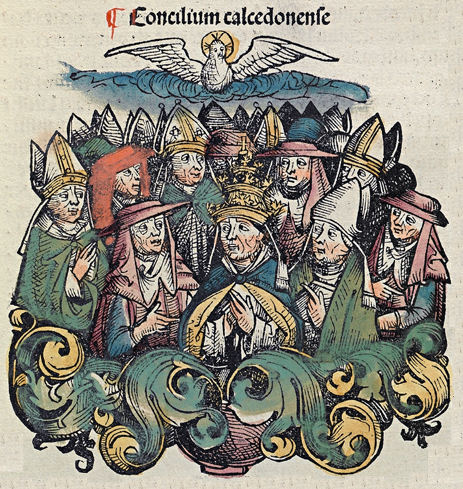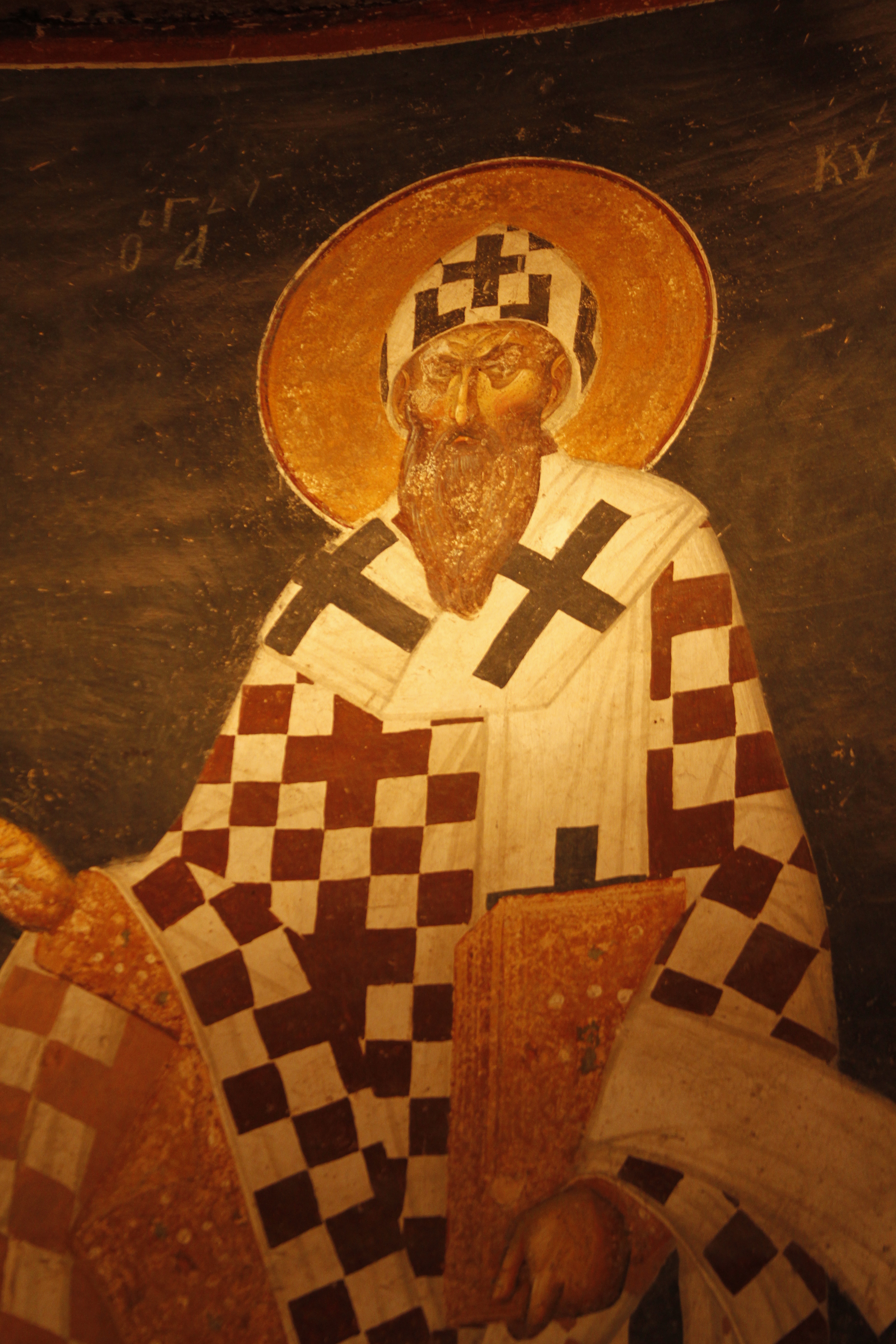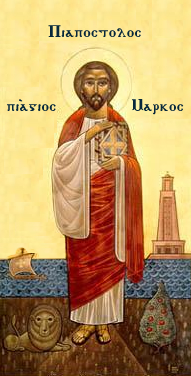|
Monophysite
Monophysitism ( ) or monophysism ( ; from Greek , "solitary" and , "nature") is a Christological doctrine that states that there was only one nature—the divine—in the person of Jesus Christ, who was the incarnated Word. It is rejected as heretical by the Catholic Church, Eastern Orthodox Church, Anglicanism, Lutheranism, Reformed Christianity (Calvinist), and all mainstream Protestant denominations, which hold to the dyophysitism of the 451 Council of Chalcedon—as well by Oriental Orthodoxy, which holds to miaphysitism. Background The First Council of Nicaea (325) declared that Christ was both divine ( homoousios, consubstantial, of one being or essence, with the Father) and human (was incarnate and became man). In the fifth century a heated controversy arose between the sees and theological schools of Antioch and Alexandria about how divinity and humanity existed in Christ, with the former stressing the humanity, the latter the divinity of Christ. Cyril of A ... [...More Info...] [...Related Items...] OR: [Wikipedia] [Google] [Baidu] |
See Of Antioch
The Patriarch of Antioch is a traditional title held by the bishop of Antioch (modern-day Antakya, Turkey). As the traditional "overseer" (, , from which the word ''bishop'' is derived) of the first gentile Christian community, the position has been of prime importance in Pauline Christianity from its earliest period. This diocese is one of the few for which the names of its bishops from the apostolic beginnings have been preserved. Today five churches use the title of patriarch of Antioch: one Eastern Orthodox (the Greek Orthodox Church of Antioch); one Oriental Orthodox (the Syriac Orthodox Church); and three Eastern Catholic (the Maronite, Syriac Catholic, and Melkite Greek Catholic Churches). According to the pre-congregation church tradition, this ancient patriarchate was founded by the Apostle Saint Peter. The patriarchal succession was disputed at the time of the Meletian schism in 362 and again after the Council of Chalcedon in 451, when there were rival Melkite and ... [...More Info...] [...Related Items...] OR: [Wikipedia] [Google] [Baidu] |
Oriental Orthodox Churches
The Oriental Orthodox Churches are Eastern Christian churches adhering to Miaphysite Christology, with approximately 50 million members worldwide. The Oriental Orthodox Churches adhere to the Nicene Christian tradition. Oriental Orthodoxy is one of the oldest branches in Christianity. As some of the oldest religious institutions in the world, the Oriental Orthodox Churches have played a prominent role in the history and culture of countries and regions such as Armenia, Egypt, Eritrea, Ethiopia, Sudan, the Levant, Iraq and the Malabar region of southern India. As autocephalous churches, their bishops are equal by virtue of episcopal ordination. Their doctrines recognize the validity of only the first three ecumenical councils. The Oriental Orthodox communion is composed of six autocephalous national churches: the Coptic Orthodox Church of Alexandria; the Syriac Orthodox Church of Antioch; the Armenian Apostolic Church comprising the autocephalous Catholicosate ... [...More Info...] [...Related Items...] OR: [Wikipedia] [Google] [Baidu] |
Miaphysitism
Miaphysitism () is the Christological doctrine that holds Jesus, the Incarnate Word, is fully divine and fully human, in one nature ('' physis'', ). It is a position held by the Oriental Orthodox Churches. It differs from the Dyophysitism of the Catholic Church, Eastern Orthodox Churches, the Church of the East and the major Protestant denominations, which holds that Jesus is one "person" of two "natures", a divine nature and a human nature, as defined by the Council of Chalcedon in 451. While historically a major point of controversy within Christianity, some modern declarations by both Chalcedonian and miaphysite () churches claim that the difference between the two Christological formulations does not reflect any significant difference in belief about the nature of Christ. Other statements from both Chalcedonian and miaphysite churches claim that such difference is indeed theological although "widened by non-theological factors" Terminology The word ''miaphysite'' der ... [...More Info...] [...Related Items...] OR: [Wikipedia] [Google] [Baidu] |
Council Of Chalcedon
The Council of Chalcedon (; ) was the fourth ecumenical council of the Christian Church. It was convoked by the Roman emperor Marcian. The council convened in the city of Chalcedon, Bithynia (modern-day Kadıköy, Istanbul, Turkey) from 8 October to 1 November 451. The council was attended by over 520 bishops or their representatives, making it the largest and best-documented of the first seven ecumenical councils. The principal purpose of the council was to re-assert the teachings of the ecumenical Council of Ephesus against the teachings of Eutyches and Nestorius. Such doctrines viewed Christ's divine and human natures as separate (Nestorianism) or viewed Christ as solely divine ( monophysitism). Agenda The ruling of the council stated: Whilst this judgment marked a significant turning point in the Christological debates, it also generated heated disagreements between the council and the Oriental Orthodox Church, who did not agree with such conduct or proceedings. Th ... [...More Info...] [...Related Items...] OR: [Wikipedia] [Google] [Baidu] |
Eastern Orthodox Church
The Eastern Orthodox Church, officially the Orthodox Catholic Church, and also called the Greek Orthodox Church or simply the Orthodox Church, is List of Christian denominations by number of members, one of the three major doctrinal and jurisdictional groups of Christianity, with approximately 230 million baptised members. It operates as a Communion (Christian), communion of autocephalous churches, each governed by its Bishop (Orthodox Church), bishops via local Holy Synod, synods. The church has no central doctrinal or governmental authority analogous to the pope of the Catholic Church. Nevertheless, the Ecumenical Patriarch of Constantinople is recognised by them as ''primus inter pares'' (), a title held by the patriarch of Rome prior to 1054. As one of the oldest surviving religious institutions in the world, the Eastern Orthodox Church has played an especially prominent role in the history and culture of Eastern Europe, Eastern and Southeastern Europe. Since 2018, the ... [...More Info...] [...Related Items...] OR: [Wikipedia] [Google] [Baidu] |
Christology
In Christianity, Christology is a branch of Christian theology, theology that concerns Jesus. Different denominations have different opinions on questions such as whether Jesus was human, divine, or both, and as a messiah what his role would be in the freeing of the Jewish people from foreign rulers or in the prophesied Kingdom of God (Christianity), Kingdom of God, and in the Salvation in Christianity, salvation from what would otherwise be the consequences of sin. The earliest Christian writings gave several titles to Jesus, such as Son of Man, Son of God, Messiah, and , which were all derived from Hebrew scripture. These terms centered around two opposing themes, namely "Jesus as a Pre-existence of Christ, preexistent figure who Incarnation (Christianity), becomes human and then Session of Christ, returns to God", versus adoptionism – that Jesus was a human who was "adopted" by God at his baptism, crucifixion, or resurrection. Prior to 2007, the scholarly consensus was tha ... [...More Info...] [...Related Items...] OR: [Wikipedia] [Google] [Baidu] |
Council Of Ephesus
The Council of Ephesus was a council of Christian bishops convened in Ephesus (near present-day Selçuk in Turkey) in AD 431 by the Roman Emperor Theodosius II. This third ecumenical council, an effort to attain consensus in the church through an assembly representing all of Christendom, Richard Kieckhefer (1989). "Papacy". '' Dictionary of the Middle Ages''. . confirmed the original Nicene Creed, * * * and condemned the teachings of Nestorius, Patriarch of Constantinople, who preferred that the Virgin Mary be called '' Christotokos'', "Christ-bearer", over '' Theotokos'', "God-bearer"; in contrast to Cyril of Alexandria who deemed ''Theotokos'' to be enough on its own. It met from 22 June to 31 July 431 at the Church of Mary in Ephesus in Anatolia. Background Nestorius' doctrine, Nestorianism, which emphasized the distinction between Christ's human and divine natures and argued that Mary should preferably be called ''Christotokos'' (Christ-bearer) over ''Theotokos'' (G ... [...More Info...] [...Related Items...] OR: [Wikipedia] [Google] [Baidu] |
Nestorius
Nestorius of Constantinople (; ; ) was an early Christian prelate who served as Archbishop of Constantinople from 10 April 428 to 11 July 431. A Christian theologian from the Catechetical School of Antioch, several of his teachings in the fields of Christology and Mariology were seen as controversial, heretical and caused major disputes. In 431, he was condemned and deposed from his see by the Council of Ephesus, presided over by his archrival Cyril of Alexandria, but the counter-council led by John I of Antioch vindicated him and deposed Cyril in return. Nestorius refrained from attending both of these councils and instead sought retirement from the Byzantine Emperor. Nestorius himself used the title Theotokos and did not advocate for its ban. His teachings included cautious usage of '' Theotokos'' ("God-Bearer"), used for Mary, mother of Jesus, in order that Christ's human and divine natures not be confused, as he believed Christ was born according to his humanity and ... [...More Info...] [...Related Items...] OR: [Wikipedia] [Google] [Baidu] |
Cyril Of Alexandria
Cyril of Alexandria (; or ⲡⲓ̀ⲁⲅⲓⲟⲥ Ⲕⲓⲣⲓⲗⲗⲟⲥ; 376–444) was the Patriarch of Alexandria from 412 to 444. He was enthroned when the city was at the height of its influence and power within the Roman Empire. Cyril wrote extensively and was a major player in the Christological controversies of the late-4th and 5th centuries. He was a central figure in the Council of Ephesus in 431, which led to the deposition of Nestorius as Patriarch of Constantinople. Cyril is counted among the Church Fathers and also as a Doctor of the Church, and his reputation within the Christian world has resulted in his titles ''Pillar of Faith'' and ''Seal of all the Fathers''. The Nestorian bishops at their synod at the Council of Ephesus declared him a heretic, labelling him as a "monster, born and educated for the destruction of the church". Cyril is well known for his dispute with Nestorius and his supporter, Patriarch John of Antioch, whom Cyril exclude ... [...More Info...] [...Related Items...] OR: [Wikipedia] [Google] [Baidu] |
Nestorianism
Nestorianism is a term used in Christian theology and Church history to refer to several mutually related but doctrinary, doctrinarily distinct sets of teachings. The first meaning of the term is related to the original teachings of Christian theologian Nestorius (), who promoted specific doctrines in the fields of Christology and Mariology. The second meaning of the term is much wider, and relates to a set of later theological teachings, that were traditionally labeled as Nestorian, but differ from the teachings of Nestorius in origin, scope and terminology. The ''Oxford English Dictionary'' defines Nestorianism as:"The doctrine of Nestorius, Patriarch of Constantinople (appointed in 428), by which Christ is asserted to have had distinct human and divine persons."Original Nestorianism is attested primarily by works of Nestorius, and also by other theological and historical sources that are related to his teachings in the fields of Mariology and Christology. His theology was infl ... [...More Info...] [...Related Items...] OR: [Wikipedia] [Google] [Baidu] |
See Of Alexandria
The Patriarch of Alexandria is the archbishop of Alexandria, Egypt. Historically, this office has included the designation "pope" (etymologically "Father", like "Abbot"). The Alexandrian episcopate was revered as one of the three major episcopal sees (along with Rome and Antioch) before Constantinople and Jerusalem were granted similar status (in 381 and 451, respectively). Alexandria was elevated to ''de facto'' archiepiscopal status by the Councils of Alexandria, and this status was ratified by Canon Six of the First Council of Nicaea, which stipulated that all the Egyptian episcopal provinces were subject to the metropolitan see of Alexandria In the sixth century, these five archbishops were formally granted the title of "patriarch" and were subsequently known as the Pentarchy. Due to several schisms within Christianity, the title of the Patriarch of Alexandria is currently claimed by different churches (two of which are part of the Catholic Church) and held respectively ... [...More Info...] [...Related Items...] OR: [Wikipedia] [Google] [Baidu] |
Episcopal See
An episcopal see is the area of a bishop's ecclesiastical jurisdiction. Phrases concerning actions occurring within or outside an episcopal see are indicative of the geographical significance of the term, making it synonymous with ''diocese''. The word ''see'' is derived from Latin , which in its original or proper sense denotes the seat or chair that, in the case of a bishop, is the earliest symbol of the bishop's authority. This symbolic chair is also known as the bishop's . The church in which it is placed is for that reason called the bishop's cathedral, from Latin , meaning the 'church of the '. The word ''throne'' is also used, especially in the Eastern Orthodox Church, both for the chair and for the area of ecclesiastical jurisdiction. The term ''see'' is also used of the town where the cathedral or the bishop's residence is located. Catholic Church Within Catholicism, each diocese is considered to be a see unto itself with a certain allegiance to the See of Rome. ... [...More Info...] [...Related Items...] OR: [Wikipedia] [Google] [Baidu] |






